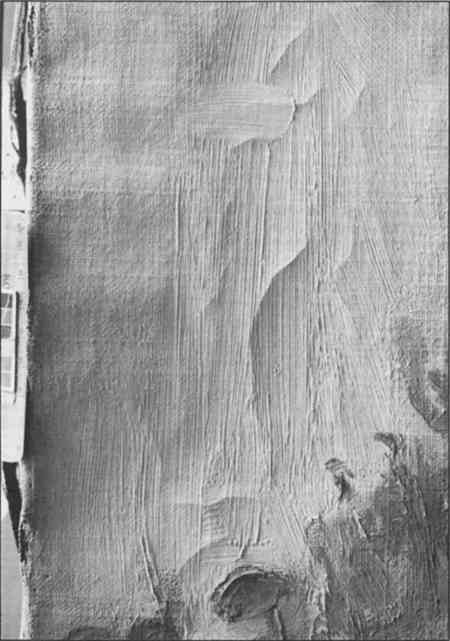DETERIORATION OF SURFACES EXPOSED TO ENVIRONMENTAL CHANGESGUSTAV A. BERGER, & WILLIAM H. RUSSELL
7 EFFECTS OF CYCLING ENVIRONMENTAL CONDITIONS ON PAINT FILMSTHE CHANGES of tension resulting from the expansions and contractions of the canvas can be measured directly by our stress tester. The effects of the glue-sizing become evident by changes in the patterns of the reactions of the sized fabric. The application of stiff paint—gouache or epoxy, for instance—causes equally dramatic changes, similar to the effects of glue-sizing. In addition, particularly with epoxy paint, the effects of thermal expansions and contractions become clearly visible. Pigments and polyester films are less susceptible to changes in RH than is cellulose, but they react to changes in temperature. On the other hand, a freshly applied oil paint film causes hardly any stress changes. Although initially disappointing, this is possibly one of the most important findings of our tests: A soft paint film does not develop any stress. If such a film is firmly attached to its substrate, it compresses readily when it expands and becomes thicker in the process. When it contracts, it simply becomes thinner again (fig. 7), just as a liquid held in a receptacle always stays in place, although it rises when expanding and falls when contracting. However, when a paint film becomes harder and stiffer than its substrate, it deforms the substrate by its expansions and contractions. The film begins to behave like a solid body or plate. In such a plate the expansions and contractions are proportional to the dimensions of the body in the direction in which they occur (fig. 8). The larger the plate, the larger the movements of its borders. Alternately, the larger the plate, the higher the stress concentrations in its weak spots when its borders are restrained.
Sometimes the edges of such plates are only partially restrained, as for instance, in a modern painting with areas of heavy paint surrounded by thinly painted canvas (fig. 9). In such a case, the central elements of the heavy plate will have to overcome the resistance of the surrounding areas. When the paint expands, the central part will have to push against the expansions of all the surrounding paint and the resistance of the canvas. When the paint film contracts, the central part will have to pull all the combined tensions of the rest of the plate. Thus, a plate that can move on its substrate multiplies and concentrates the stress generated by all its parts.
In a painting that is 30 to 50 years old, as in the interior by Alice Stoddard (detail, fig. 10) the first cracks develop in the center of the largest and hardest “plates” of heavy paint. At the same time, thinly painted areas stay free of cracks because they form no plates and, therefore, cannot generate the forces necessary to crack a paint film. Of special interest in fig. 10 are also the concentric cracks surrounding the area of heavy impasto,
At low tensions the effect of the thermal expansions can easily be observed on the stress tester. This is shown in figure 11, another diagram of the “shrinking canvas,” first described in figure 1. In a badly prepared canvas, such as this one, values of the MST (see “Stretching a Canvas”, above) are well below the elastic limits of the canvas. Therefore, under certain environmental conditions, the canvas has no longer sufficient stiffness to support the paint film adequately. The stress diagram in figure 11b is shown in enlarged scale in figure 11c. Between the beginning of the test and its 15th hour, and again at its 48th hour, there are large stress fluctuations caused by changes in temperature. These changes cannot be explained by the behavior of canvas, but are indicative of the expansions and contractions of the paint film. They occur only at changes in temperature. Indeed, the large rise and fall in relative humidity, from 20% to 50% and back, at the 37th and 53rd hours, do not cause as large a stress change as the fluctuations in temperature of less than 5�C at the 12th and 48th hour. These stress changes have an amplitude of 80 N/m,or more than 100% of the lowest tension recorded in this test. At these low tensions a fluctuation of 80 N/m indicates a movement of more than 0.3%, which is quite a considerable strain. Changes in temperature of 5�C are frequently repeated in rooms equipped with cycling heaters and air-conditioners. They activate the mechanism of decay described by the stress-valves and probably are the main cause of the damages previously attributed to their drying effect alone. |



